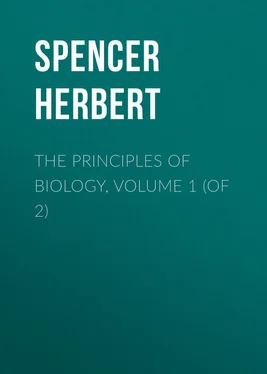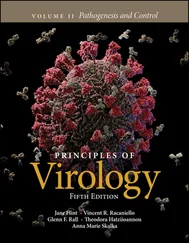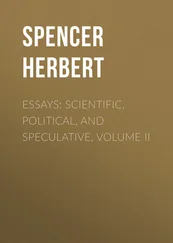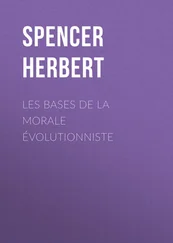Herbert Spencer - The Principles of Biology, Volume 1 (of 2)
Здесь есть возможность читать онлайн «Herbert Spencer - The Principles of Biology, Volume 1 (of 2)» — ознакомительный отрывок электронной книги совершенно бесплатно, а после прочтения отрывка купить полную версию. В некоторых случаях можно слушать аудио, скачать через торрент в формате fb2 и присутствует краткое содержание. Жанр: Философия, foreign_antique, foreign_prose, на английском языке. Описание произведения, (предисловие) а так же отзывы посетителей доступны на портале библиотеки ЛибКат.
- Название:The Principles of Biology, Volume 1 (of 2)
- Автор:
- Жанр:
- Год:неизвестен
- ISBN:нет данных
- Рейтинг книги:3 / 5. Голосов: 1
-
Избранное:Добавить в избранное
- Отзывы:
-
Ваша оценка:
- 60
- 1
- 2
- 3
- 4
- 5
The Principles of Biology, Volume 1 (of 2): краткое содержание, описание и аннотация
Предлагаем к чтению аннотацию, описание, краткое содержание или предисловие (зависит от того, что написал сам автор книги «The Principles of Biology, Volume 1 (of 2)»). Если вы не нашли необходимую информацию о книге — напишите в комментариях, мы постараемся отыскать её.
The Principles of Biology, Volume 1 (of 2) — читать онлайн ознакомительный отрывок
Ниже представлен текст книги, разбитый по страницам. Система сохранения места последней прочитанной страницы, позволяет с удобством читать онлайн бесплатно книгу «The Principles of Biology, Volume 1 (of 2)», без необходимости каждый раз заново искать на чём Вы остановились. Поставьте закладку, и сможете в любой момент перейти на страницу, на которой закончили чтение.
Интервал:
Закладка:
The hydrated carbon which protoplasm, having the chlorophyll-grain as its implement, produces from carbonic acid and water, appears not to be of one kind only. The possible carbo-hydrates are almost infinite in number. Multitudes of them have been artificially made, and numerous kinds are made naturally by plants. Though perhaps the first step in the reduction of the carbon from its dioxide may be always the same, yet it is held probable that in different types of plants different types of carbo-hydrates forthwith arise, and give differential characters to the compounds subsequently formed by such types: sundry of the changes being katabolic rather than anabolic. Of leading members in the group may be named dextrin, starch, and the various sugars characteristic of various plants, as well as the cellulose elaborated by further anabolism. Considered as the kind of carbo-hydrate in which the products of activity are first stored up, to be subsequently modified for divers purposes, starch is the most important of these; and the process of storage is suggested by the structure of the starch-grain. This consists of superposed layers, implying intermittent deposits: the probability being that the variations of light and heat accompanying day and night are associated now with arrest of the deposit and now with recommencement of it. Like in composition as this stored-up starch is with sugar of one or other kind, and capable of being deposited from sugar and again assuming the sugar form, this substance passes, by further metabolism, here into the cellulose which envelopes each of the multitudinous units of protoplasm, there into the spiral fibres, annuli, or fenestrated tubes which, in early stages of tissue-growth, form channels for the sap, and elsewhere into other components of the general structure. The many changes implied are effected in various ways: now by that simple re-arrangement of components known as isomeric change; now by that taking from a compound one of its elements and inserting one of another kind, which is known as substitution; and now by oxidation, as when the oxy-cellulose which constitutes wood-fibre, is produced.
Besides elaborating building materials, the protoplasm elaborates itself – that is, elaborates more of itself. It is chemically distinguished from the building materials by the presence of nitrogen. Derived from atmospheric ammonia, or from decaying or excreted organic matter, or from the products of certain fungi and microbes at its roots, the nitrogen in one or other combination is brought into a plant by the upward current; and by some unknown process (not dependent on light, since it goes on equally well if not better in darkness) the protoplasm dissociates and appropriates this combined nitrogen and unites it with a carbo-hydrate to form one or other proteid – albumen, gluten, or some isomer; appropriating at the same time from certain of the earth-salts the requisite amount of sulphur and in some cases phosphorus. The ultimate step, as we must suppose, is the formation of living protoplasm out of these non-living proteids. A cardinal fact is that proteids admit of multitudinous transformations; and it seems not improbable that in protoplasm various isomeric proteids are mingled. If so, we must conclude that protoplasm admits of almost infinite variations in nature. Of course pari passu with this dual process – augmentation of protoplasm and accompanying production of carbo-hydrates – there goes extension of plant-structure and plant-life.
To these essential metabolic processes have to be added certain ancillary and non-essential ones, ending in the formation of colouring matters, odours, essential oils, acrid secretions, bitter compounds and poisons: some serving to attract animals and others to repel them. Sundry of these appear to be excretions – useless matters cast out, and are doubtless katabolic.
The relation of these facts here sketched in rude outline to the doctrine of Evolution at large should be observed. Already we have seen how ( § 8 a ), in the course of terrestrial evolution, there has been an increasingly heterogeneous assemblage of increasing heterogeneous compounds, preparing the way for organic life. And here we may see that during the development of plant-life from its lowest algoid and fungoid forms up to those forms which constitute the chief vegetal world, there has been an increasing number of complex organic compounds formed; displayed at once in the diversity of them contained in the same plant and in the still greater diversity displayed in the vast aggregate of species, genera, orders, and classes of plants.
§ 23 d . On passing to the metabolism characterizing animal life, which, as already indicated, is in the main a process of decomposition undoing the process of composition characterizing vegetal life, we may fitly note at the outset that it must have wide limits of variation, alike in different classes of animals and even in the same animal.
If we take, on the one hand, a carnivore living on muscular tissue (for wild carnivores preying upon herbivores which can rarely become fat obtain scarcely any carbo-hydrates) and observe that its food is almost exclusively nitrogenous; and if, on the other hand, we take a graminivorous animal the food of which (save when it eats seeds) contains comparatively little nitrogenous matter; we seem obliged to suppose that the parts played in the organic processes by the proteids and the carbo-hydrates can in considerable measures replace one another. It is true that the quantity of food and the required alimentary system in the last case, are very much greater than in the first case. But this difference is mainly due to the circumstance that the food of the graminivorous animal consists chiefly of waste-matter – ligneous fibre, cellulose, chlorophyll – and that could the starch, sugar, and protoplasm be obtained without the waste-matter, the required bulks of the two kinds of food would be by no means so strongly contrasted. This becomes manifest on comparing flesh-eating and grain-eating birds – say a hawk and a pigeon. In powers of flight these do not greatly differ, nor is the size of the alimentary system conspicuously greater in the last than in the first; though probably the amount of food consumed is greater. Still it seems clear that the supply of energy obtained by a pigeon from carbo-hydrates with a moderate proportion of proteids is not widely unlike that obtained by a hawk from proteids alone. Even from the traits of men differently fed a like inference may be drawn. On the one hand we have the Masai who, during their warrior-days, eat flesh exclusively; and on the other hand we have the Hindus, feeding almost wholly on vegetable food. Doubtless the quantities required in these cases differ much; but the difference between the rations of the flesh-eater and the grain-eater is not so immense as it would be were there no substitution in the physiological uses of the materials.
Concerning the special aspects of animal-metabolism, we have first to note those various minor transformations that are auxiliary to the general transformation by which force is obtained from food. For many of the vital activities merely subserve the elaboration of materials for activity at large, and the getting rid of waste products. From blood passing through the salivary glands is prepared in large quantity a secretion containing among other matters a nitrogenous ferment, ptyaline, which, mixed with food during mastication, furthers the change of its starch into sugar. Then in the stomach come the more or less varying secretions known in combination as gastric juice. Besides certain salts and hydrochloric acid, this contains another nitrogenous ferment, pepsin, which is instrumental in dissolving the proteids swallowed. To these two metabolic products aiding solution of the various ingested solids, is presently added that product of metabolism in the pancreas which, added to the chyme, effects certain other molecular changes – notably that of such amylaceous matters as are yet unaltered, into saccharine matters to be presently absorbed. And let us note the significant fact that the preparation of food-materials in the alimentary canal, again shows us that unstable nitrogenous compounds are the agents which, while themselves changing, set up changes in the carbo-hydrates and proteids around: the nitrogen plays the same part here as elsewhere. It does the like in yet another viscus. Blood which passes through the spleen on its way to the liver, is exposed to the action of "a special proteid of the nature of alkali-albumin, holding iron in some way peculiarly associated with it." Lastly we come to that all-important organ the liver, at once a factory and a storehouse. Here several metabolisms are simultaneously carried on. There is that which until recent years was supposed to be the sole hepatic process – the formation of bile. In some liver-cells are masses of oil-globules, which seem to imply a carbo-hydrate metamorphosis. And then, of leading importance, comes the extensive production of that animal-starch known as glycogen – a substance which, in each of the cells generating it, is contained in a plexus of protoplasmic threads: again a nitrogenous body diffused through a mass which is now formed out of sugar and is now dissolved again into sugar. For it appears that this soluble form of carbo-hydrate, taken into the liver from the intestine, is there, when not immediately needed, stored up in the form of glycogen, ready to be re-dissolved and carried into the system either for immediate use or for re-deposit as glycogen at the places where it is presently to be consumed: the great deposit in the liver and the minor deposits in the muscles being, to use the simile of Prof. Michael Foster, analogous in their functions to a central bank and branch banks.
Читать дальшеИнтервал:
Закладка:
Похожие книги на «The Principles of Biology, Volume 1 (of 2)»
Представляем Вашему вниманию похожие книги на «The Principles of Biology, Volume 1 (of 2)» списком для выбора. Мы отобрали схожую по названию и смыслу литературу в надежде предоставить читателям больше вариантов отыскать новые, интересные, ещё непрочитанные произведения.
Обсуждение, отзывы о книге «The Principles of Biology, Volume 1 (of 2)» и просто собственные мнения читателей. Оставьте ваши комментарии, напишите, что Вы думаете о произведении, его смысле или главных героях. Укажите что конкретно понравилось, а что нет, и почему Вы так считаете.












